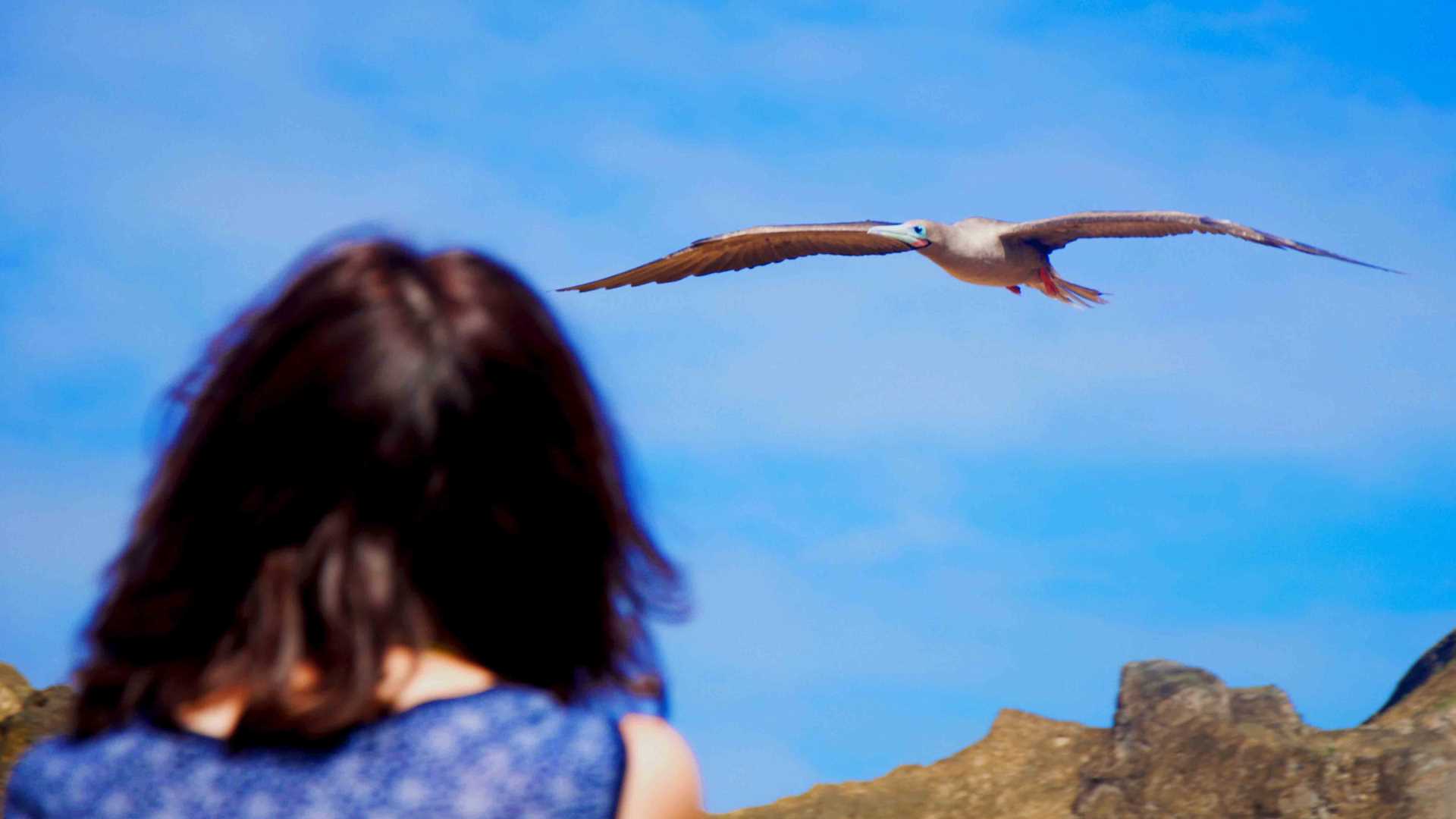San Cristóbal Island is the easternmost and oldest island of the Galapagos archipelago. Here, we experienced our last visits of an extraordinary week onboard the National Geographic Islander. In the morning, we walked along a dry watercourse to reach the spectacular landscape of Punta Pitt, the northernmost area of the archipelago. This place host a colony of red footed boobies, colorful and curious seabirds with bright red feet, blue beaks and pinkish tones on their faces.
Being the most pelagic of all boobies, the red footed booby can be found in San Cristobal exclusively on this visiting site, which makes this trail the most attracting destination for trekking in San Cristóbal. We also spotted a great number of blue footed boobies nesting along the trail, as well as various Nazca boobies flying around us. What a best way of ending our week than seeing all the three different species of boobies in one trail. After the walk, we ended up in a green sand beach where playful sea lions delighted us with their pirouettes and relaxed behavior. Some of us enjoyed the last snorkel of the week, with some good sightings of tropical fish and sea lions playing underwater.
In the afternoon, we had the opportunity to visit one of the most astonishing beaches in the Galapagos: Cerro Brujo. With sand like flour, this large and pristine beach seems an idyllic landscape that combines the beautiful aquamarine tones of the ocean with the surreal patterns of lava covered by evergreen littoral vegetation. This was a time to relax and stroll on a paradisiac scenario. Blue footed boobies, sea lions, frigate birds and marine iguanas were present along the beach, which reminded us that Galapagos is not just a fascinating landscape but a hotspot of unique biological diversity. With a breathtaking sunset, we ended up a great week on board the National Geographic Islander.







